Ice shelf surfaceThe McMurdo Ice Shelf is one of the most unusual in Antarctica. In addition to large areas covered by snow, there are also areas of pale blue glacier ice and darker marine ice. The bare ice areas are heavily pitted. The marine ice accretes to the base of the ice shelf, and as the surface melts off, so this ice gradually works its way to the surface, bringing with it sediment and organisms. There are extensive areas of debris cover and numerous meltwater channels. The ice shelf edge is characterised by intricate carving and gullying of the ice. Summer melt had not really begun in ernest during our early summer visit. |
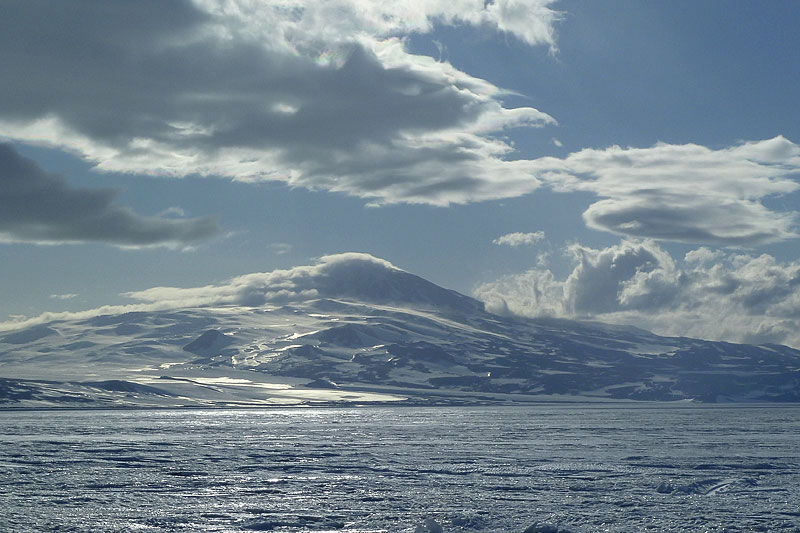 The rough, pitted surface of the McMurdo Ice Shelf near the camp is overlooked by Mt Discovery, where a strong southerly wind is whipping up spindrift around the summit. | 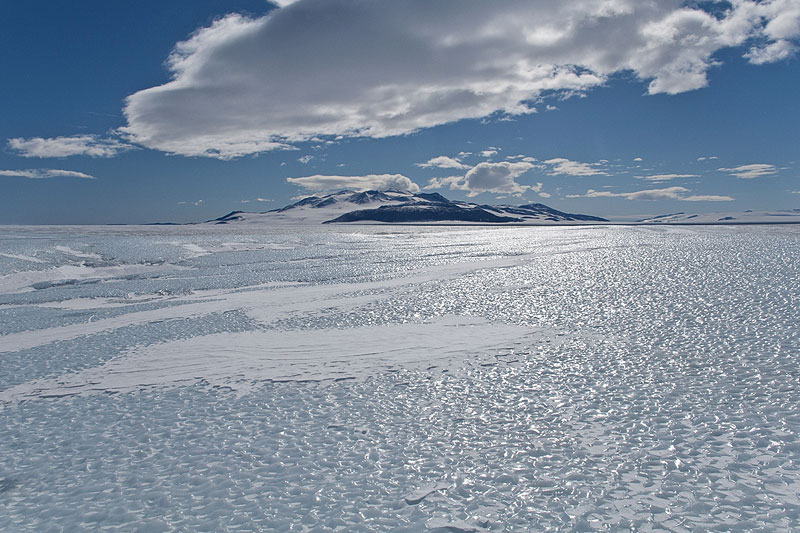 Hard ice surface of the ice shelf, reflecting the sun, looking towards Black Island. A few patches of snow remain in this area. | 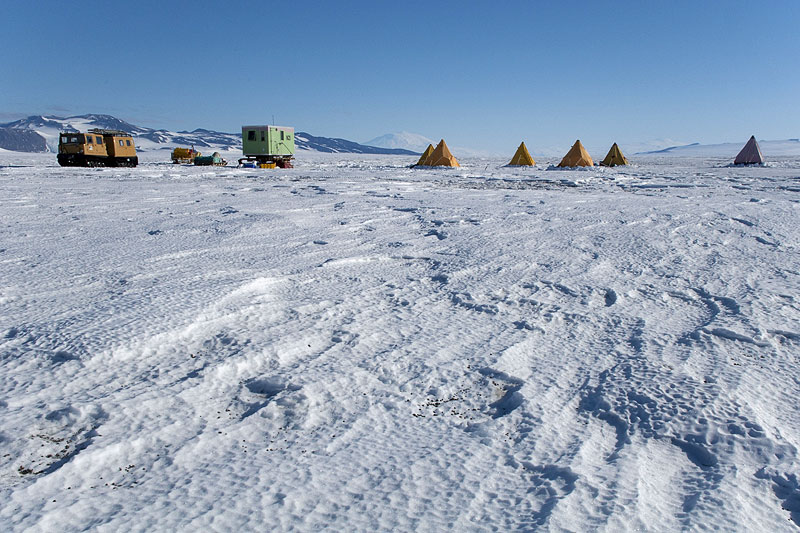 Sastrugi (wind-generated snow dunes) near the camp. They are orientated in the direction of the prevailing southerly wind. | 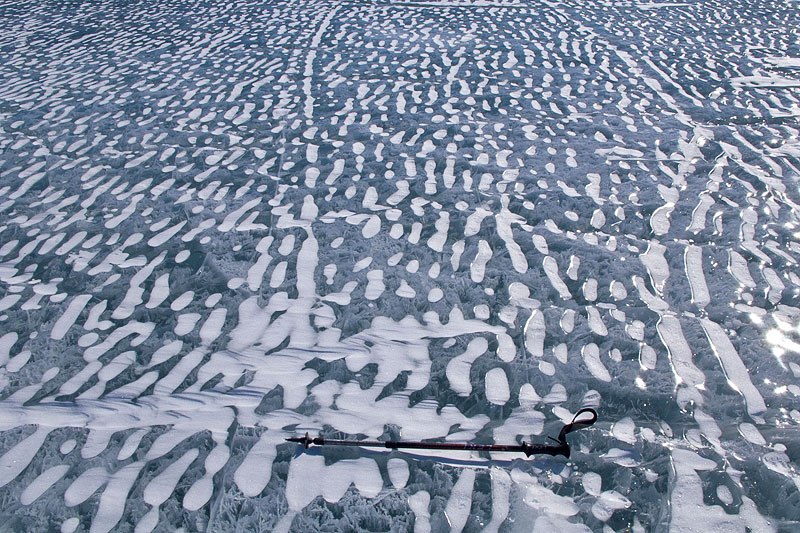 Wind ripples formed transverse to the prevailing southerly wind on refrozen water ice. Their form is enhanced by recent snow. |
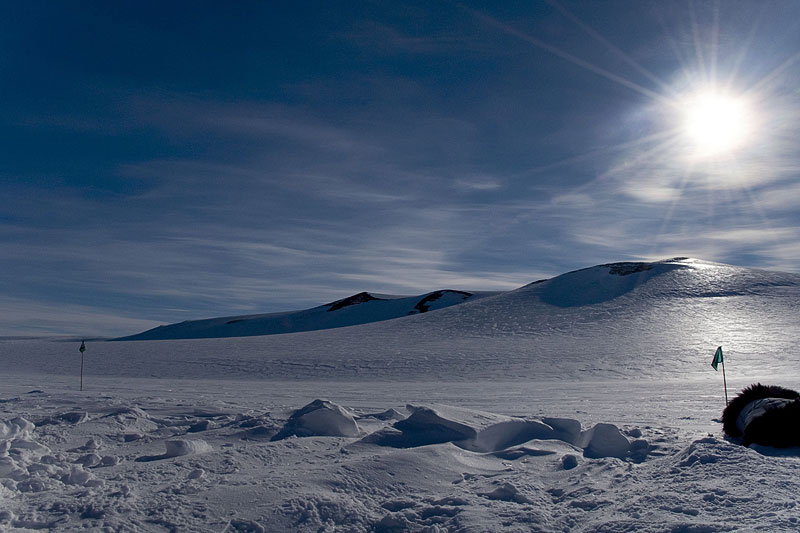 Snow-covered part of the ice shelf, close to where it impinges against Ross Island. | 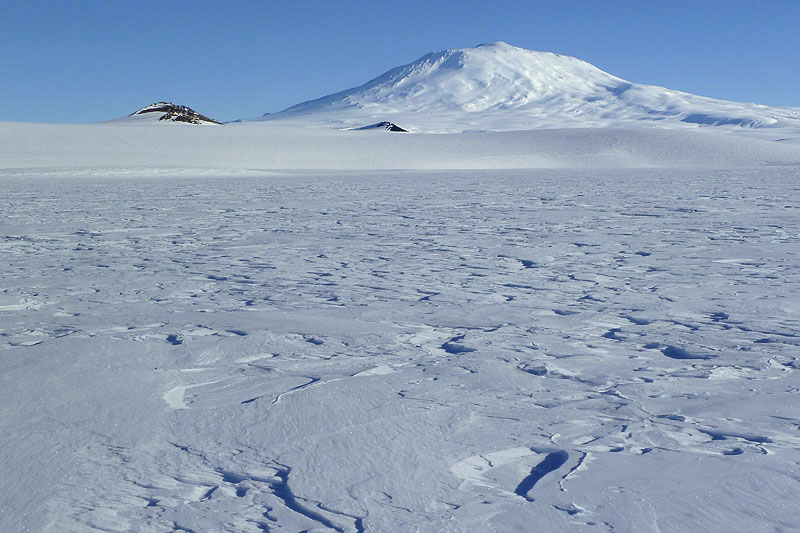 Wind-scoured snow, barely sastrugi, on the ice shelf, with Mt Erebus in the background. | 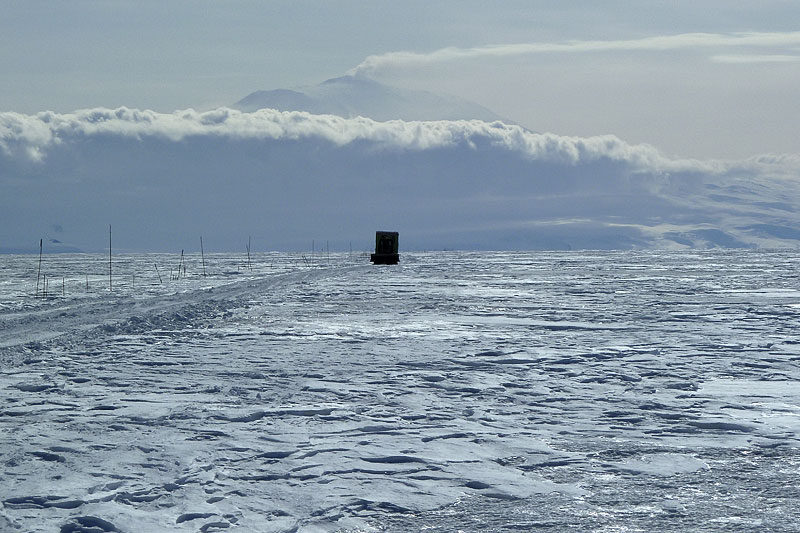 Tractors follow a route through the gap between Black Island and White Island, marked by bamboo poles. In the background is Mt Erebus. | 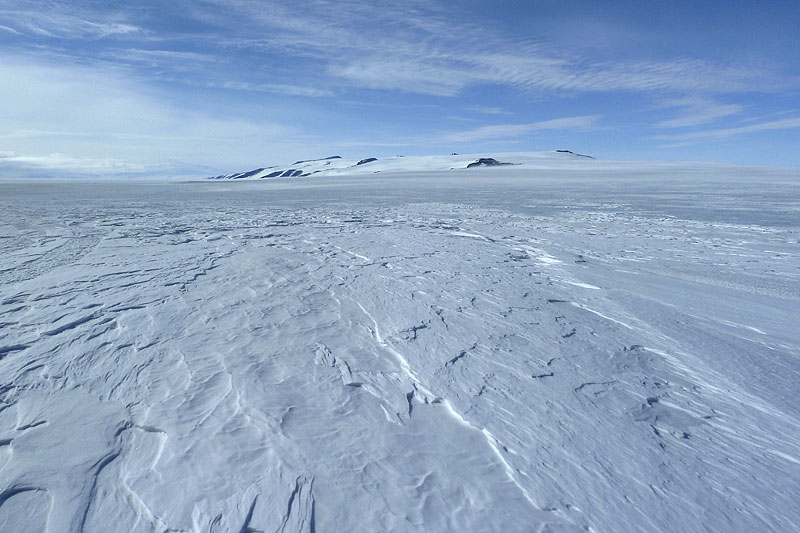 The main accumulation zone on the ice shelf, looking towards White Island. This area is close to sea level, but receives more snow than other parts of the ice shelf. |
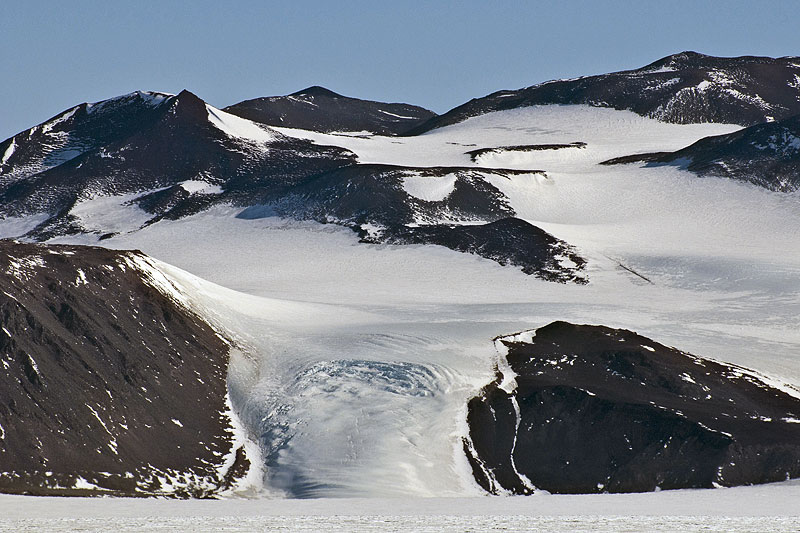 Small un-named glacier, flowing off Black Island into McMurdo Ice Shelf. | 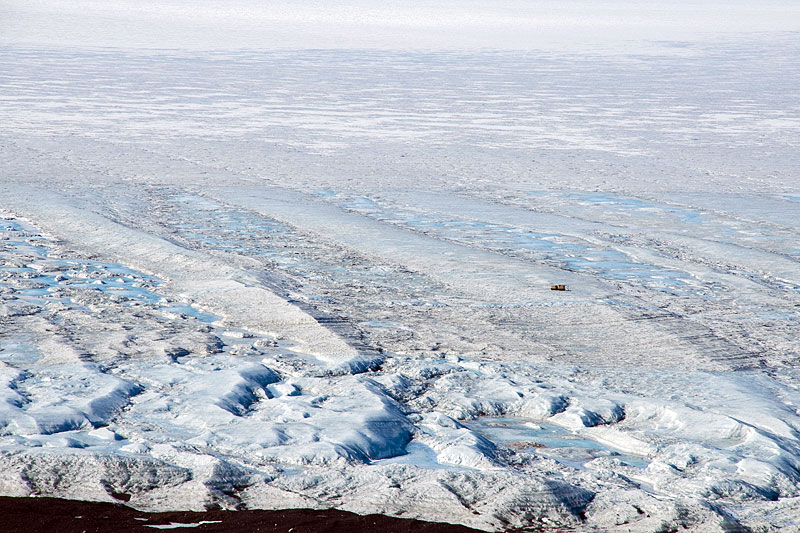 Looking down on the McMurdo Ice Shelf from Minna Bluff, showing the longitudinal ridges and rough bare ice surface of the marginal zone of the ice shelf. | 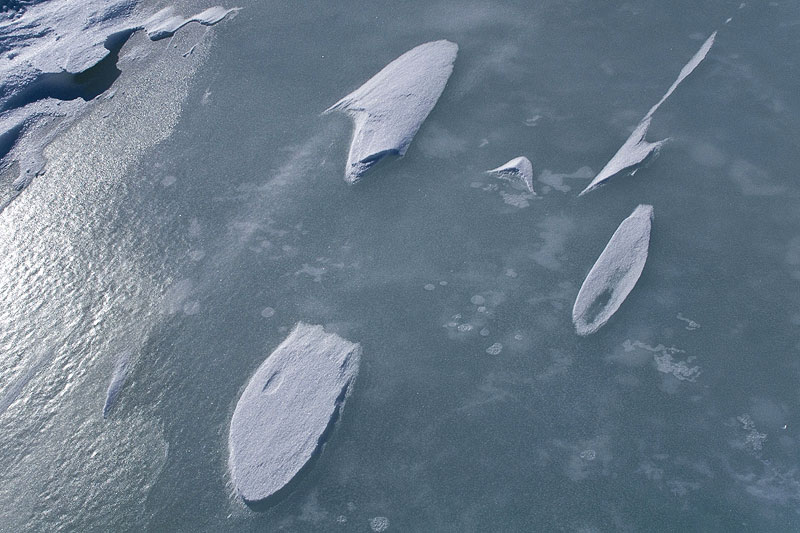 The amount of snow precipitation adjacent to Minna Bluff is tiny. During blizzards, most of the snow is transferred away, leaving starved ripples on a bare ice surface. | 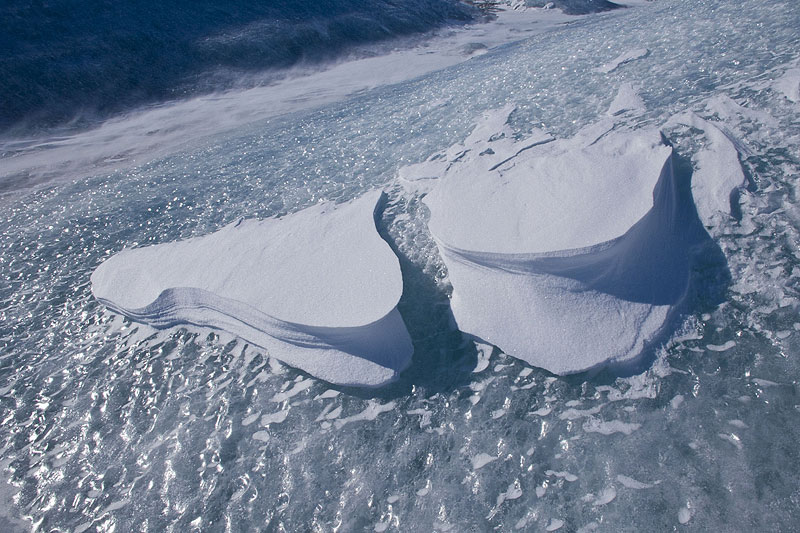 A pair of unusual starved ripples resting on a surface of marine ice. |
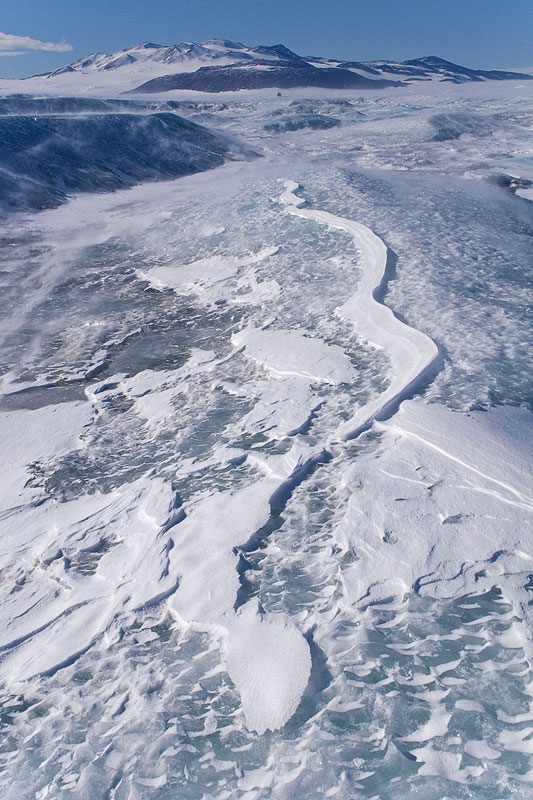 A ‘snow snake’, resulting from localised snow deposition on the ice surface. It trends parallel to the wind direction. | 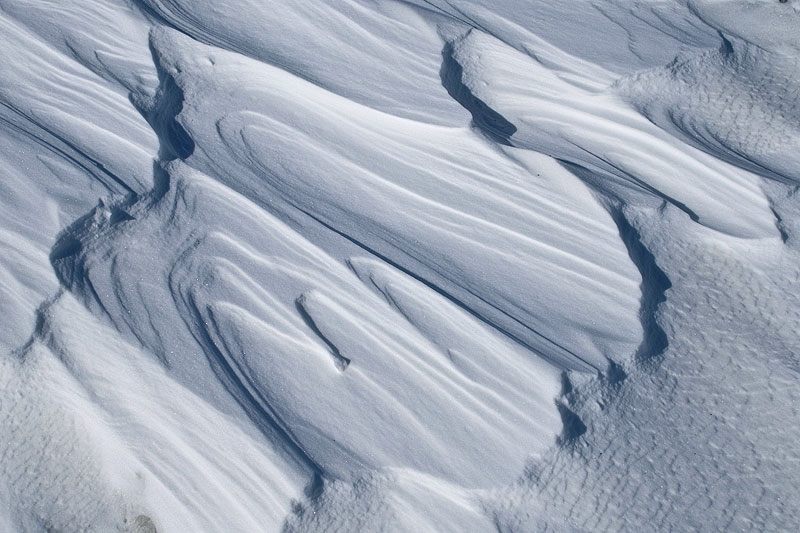 Some hollows in the ice surface collect more substantial deposits of snow. Here are some fresh snow dunes. | 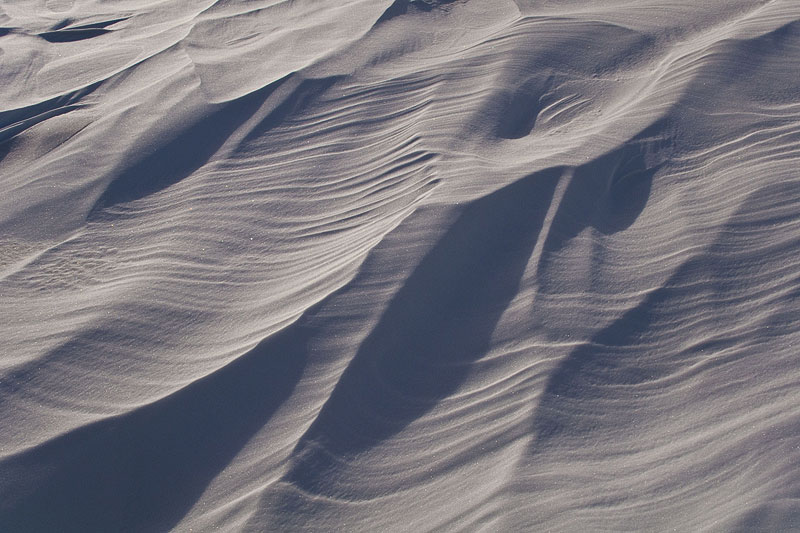 Detail of snow dunes, showing the granular texture of the wind-blown snow. | 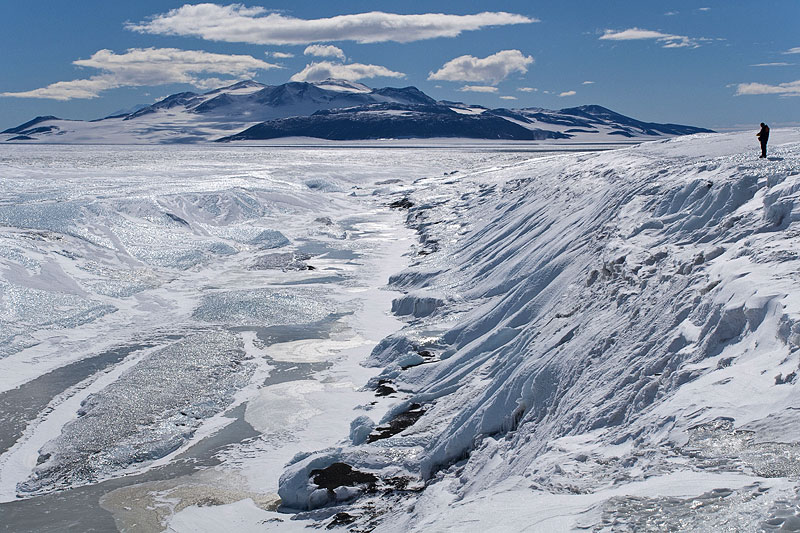 Deep channel cut into marine ice and capped by glacier ice, close to southern margin of ice shelf; Black Island in the background. |
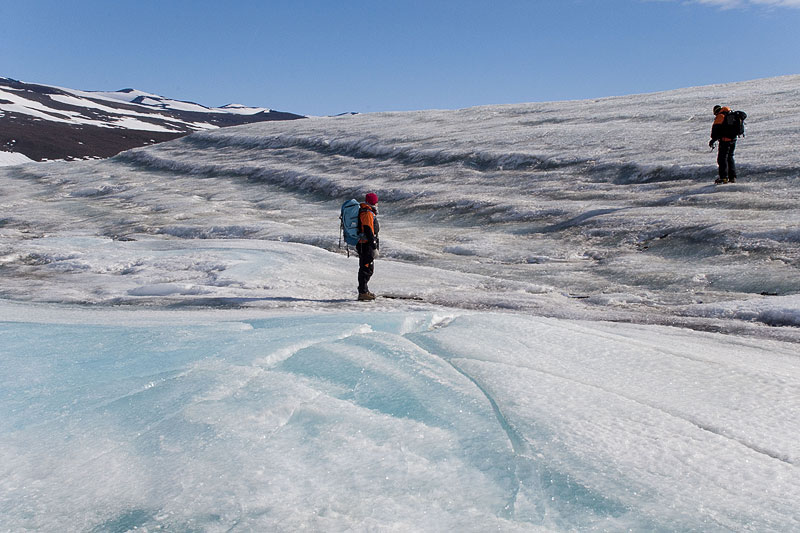 Accretion layering at the surface of the ice shelf just off Minna Bluff. This is the result of marine ice forming at the base of the ice shelf in stages. Boundaries are commonly marked by marine fossils. | 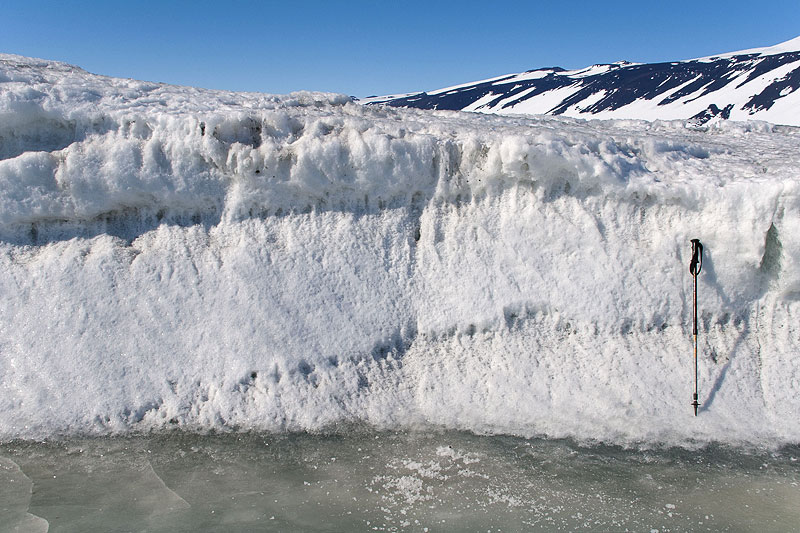 Accretion layering in marine ice. The trekking pole indicates that each layer is typically 1 to 2 metres thick. Refrozen water ice is in the foreground. | 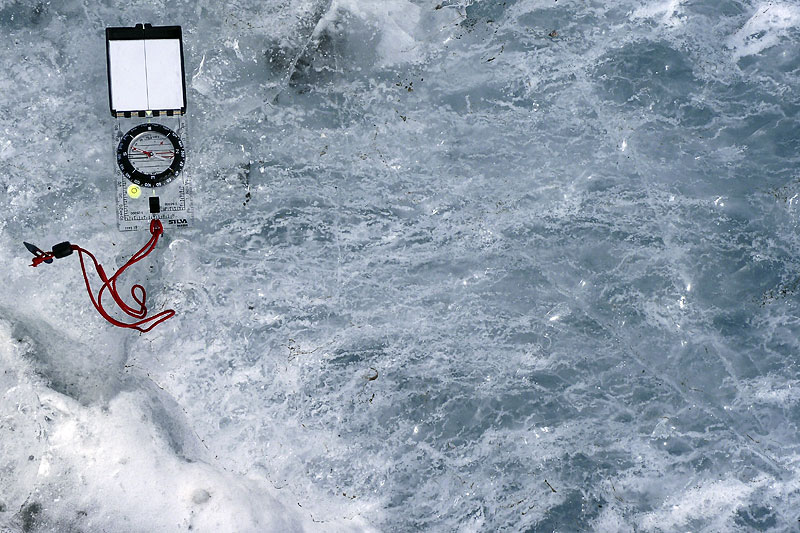 Marine ice has a unique layered structure. The layers are typically lens-shaped and bounded by air bubbles. They form approximately vertical to the main accretion layers, and superficially resemble foliation in glacier ice. | 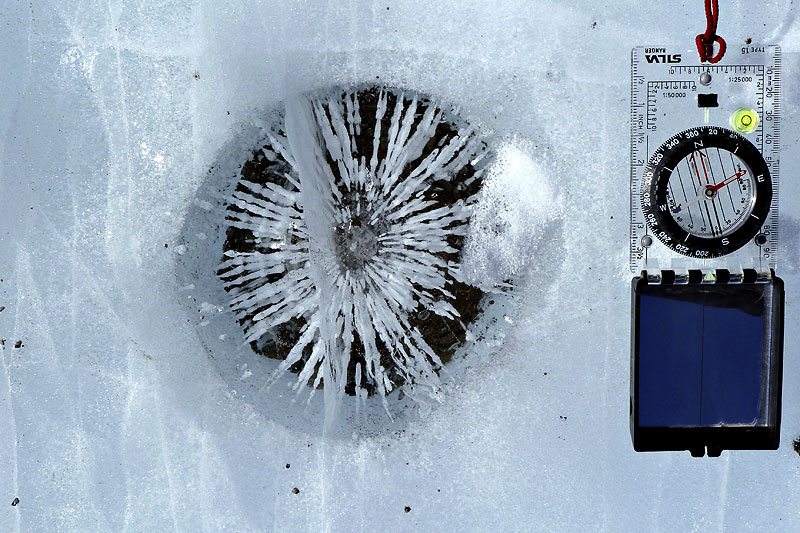 A cylindrical cryoconite hole approximately 15 cm in diameter. Water overlies a film of debris and algae, but is capped by a lid of ice. |
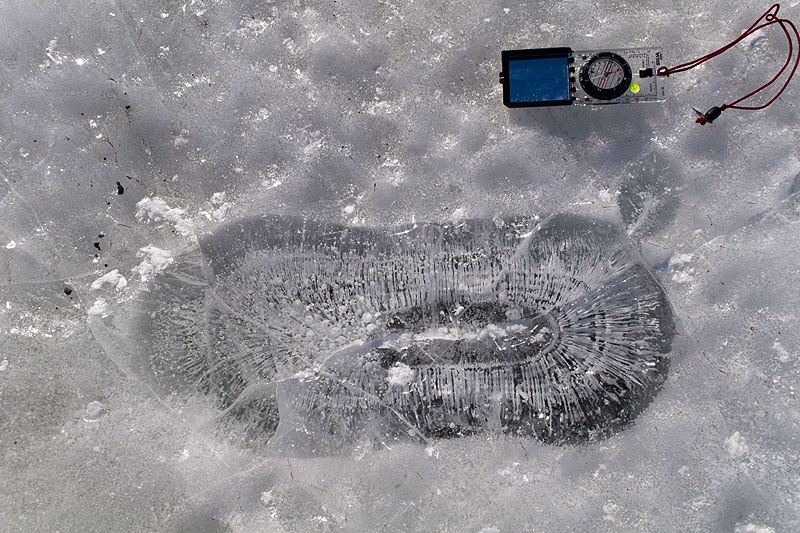 Cryoconites come in many shapes and sizes; this one is oval-shaped. | 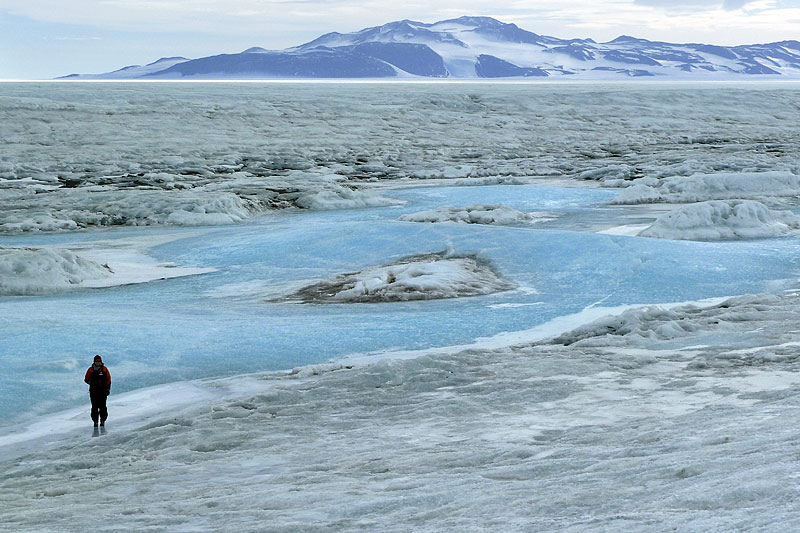 Turquoise refrozen water ice in frozen streams and ponds contrasts strongly with the greyish marine ice near the southern ice shelf boundary at Minna Bluff. | 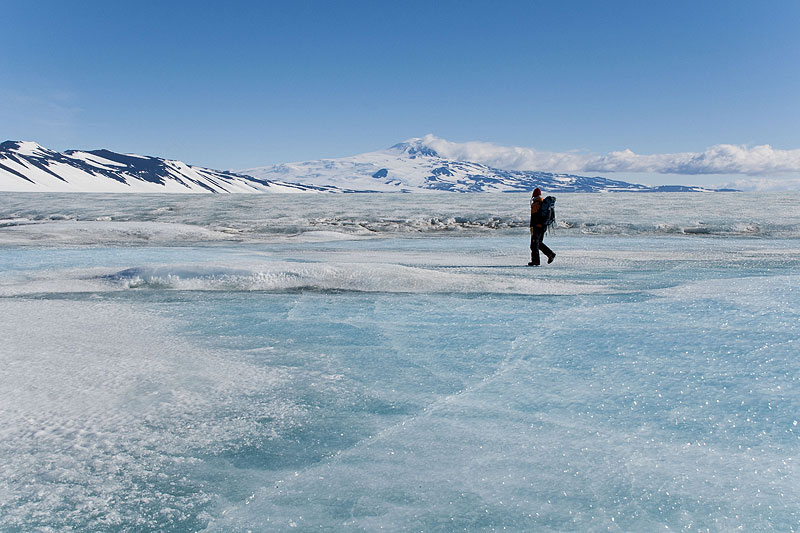 Blue water ice close up with Mt Dicovery in the background. | 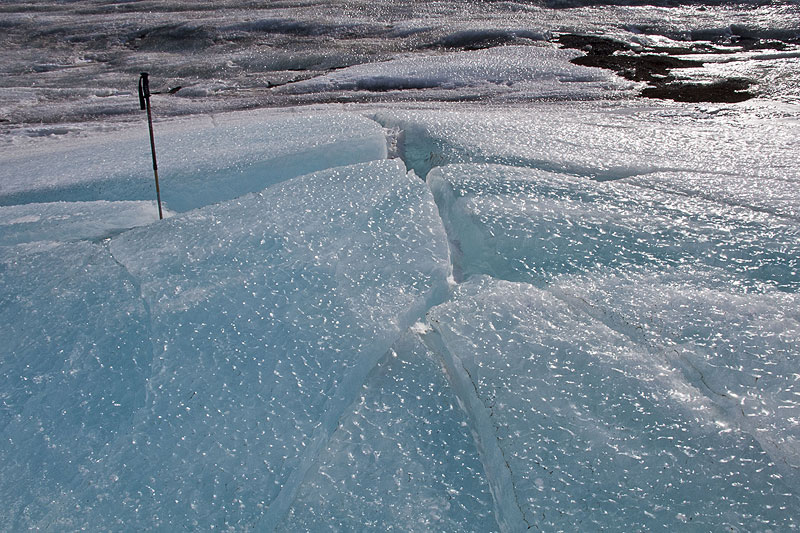 Water on freezing expands, forming prominent ‘ice blisters’, which are mounds with cracks across the top. These blisters usually form in confined stream courses. |
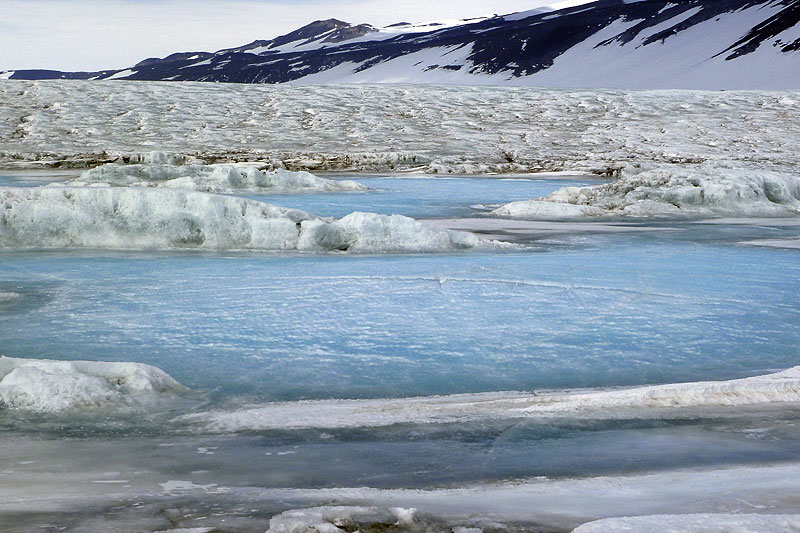 Turquoise blue ice ponds collect at the southern margin of the ice shelf, adjacent to Minna Bluff (in the background). | 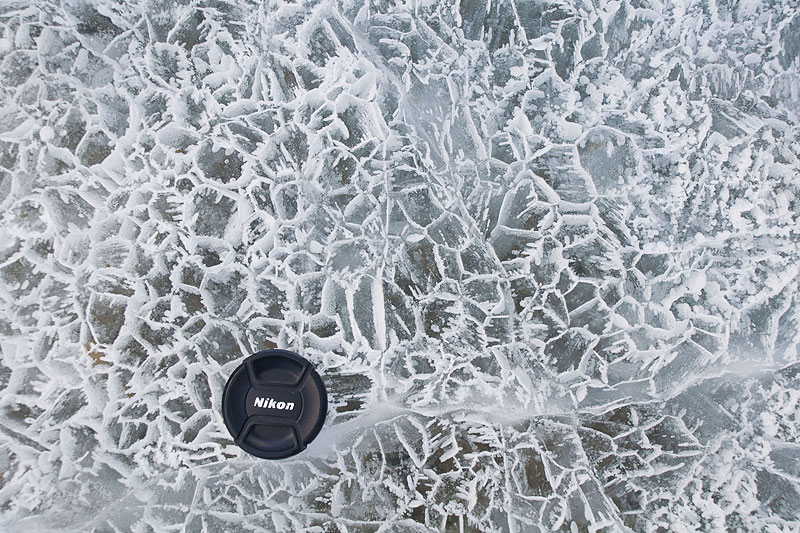 Close up of etched ice crystals (candle ice) in plan view. When meltwater refreezes, vertical crystals up to 30 cm long form, which when weathered can be demolished into their constituent ‘candles’. | 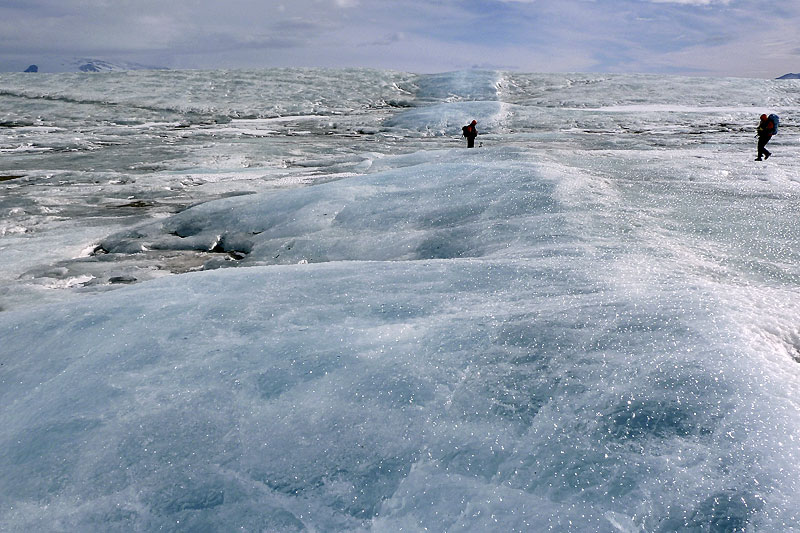 A vertical dyke of blue clear ice several metres wide near the margin of the ice shelf at Minna Bluff. Clearly a fracture that was originally water-filled, the actual origin of this feature is a puzzle. | 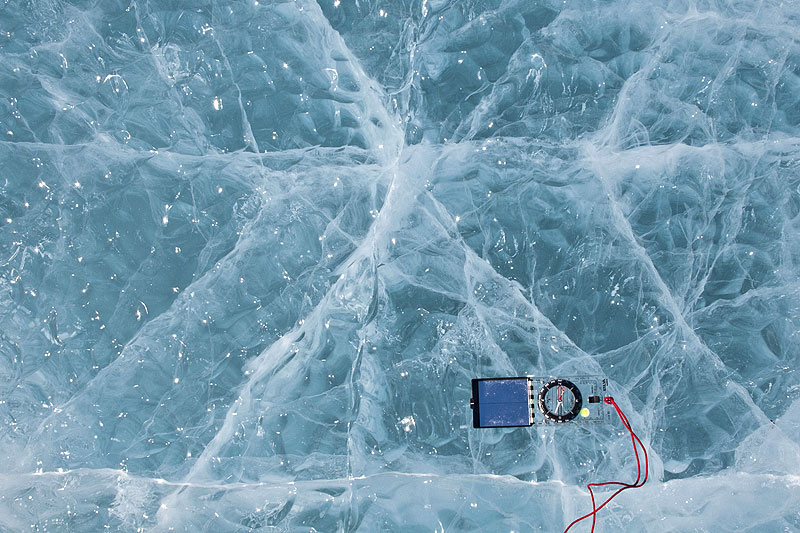 Close-up of clear fractured ice in the middle of the dyke. |
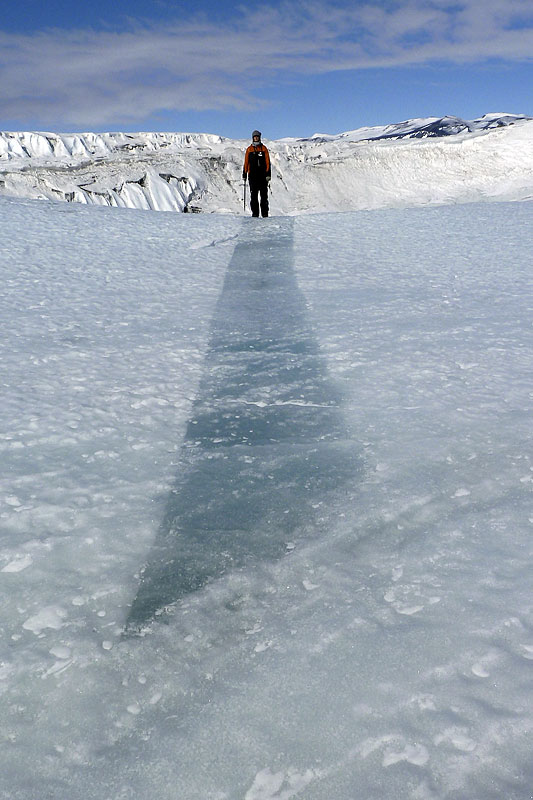 Truncated frozen water-filled former crevasse near a prominent medial moraine that extends into the ice shelf from the shore of Minna Bluff. | 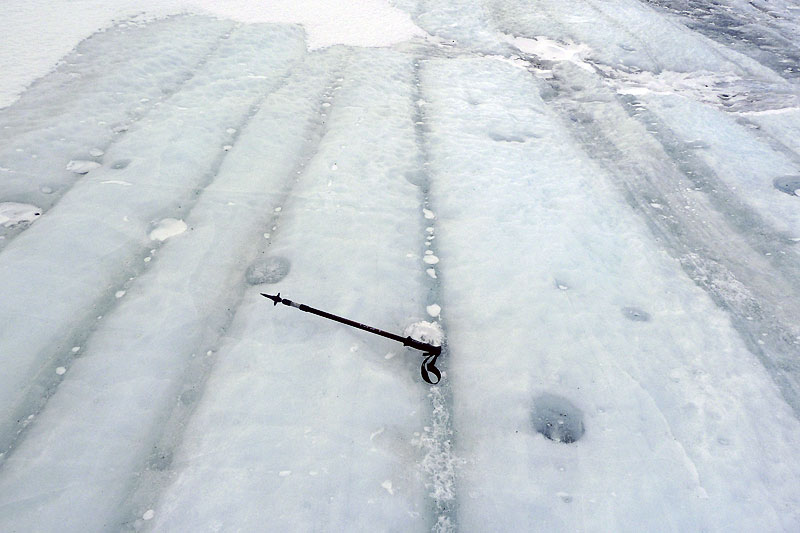 A set of narrow parallel frozen water-filled crevasses, near the prominent medial moraine. | 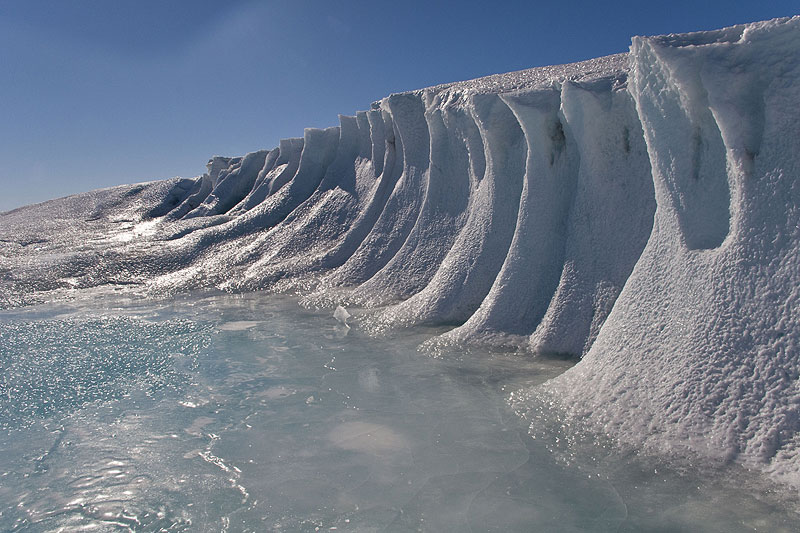 An intricately carved, 3 m high, ice wall in a channel near the shore of Minna Bluff, formed from a combination of water erosion and ablation. | 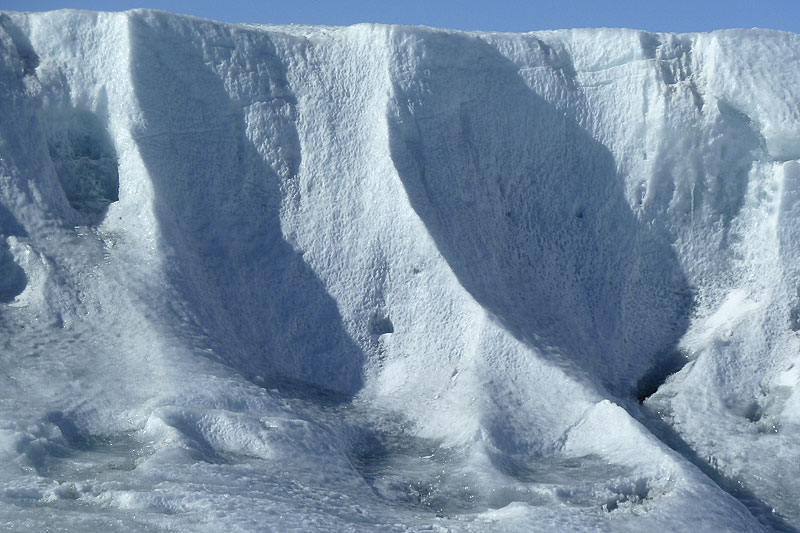 Details of miniature buttresses, ice texture and marine ice layering in the same channel wall. |
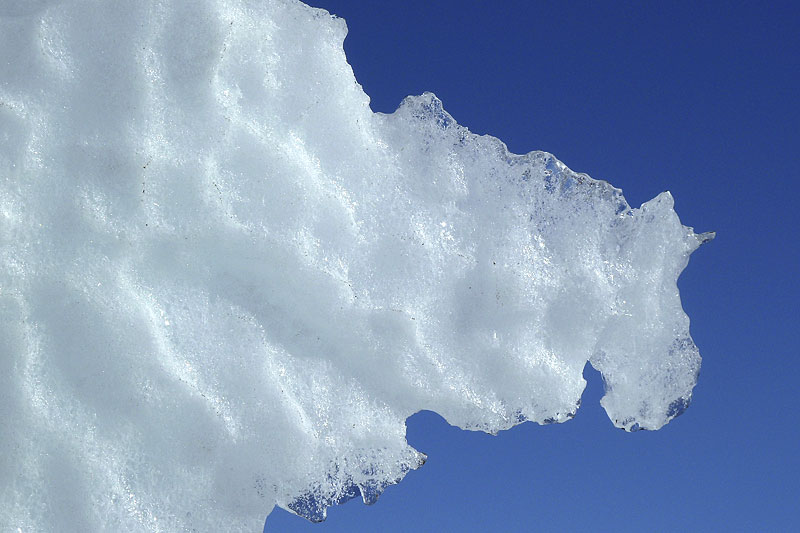 Scalloped sliver of ice a metre or so wide on the wall of a meltwater channel. | 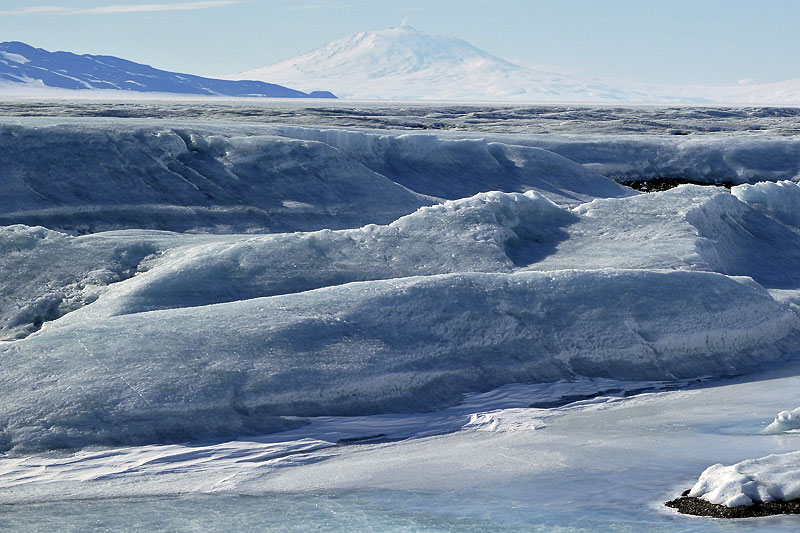 Anastomosing marine ice ridges with intervening channels near the ice shelf margin at Minna Bluff. The relief is several metres. | 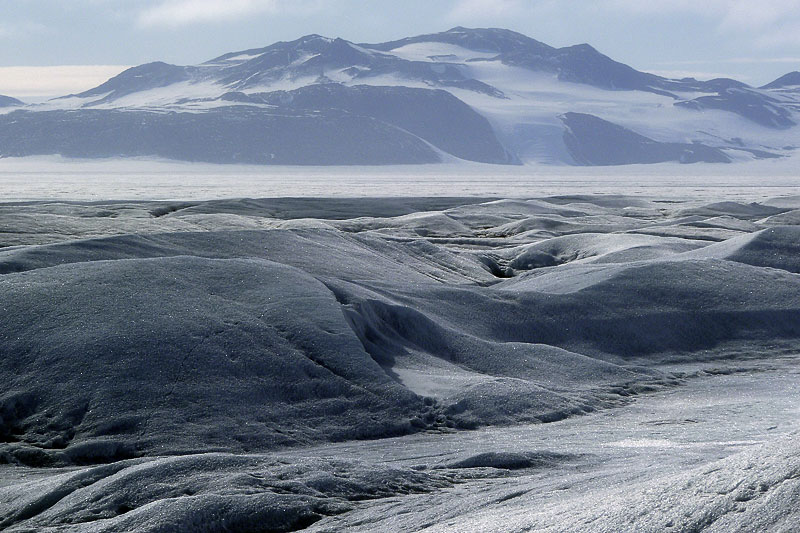 Swaley ice topography of several metres relief at the ice shelf margin. This is another telephoto view, but with Black Island in the background. | 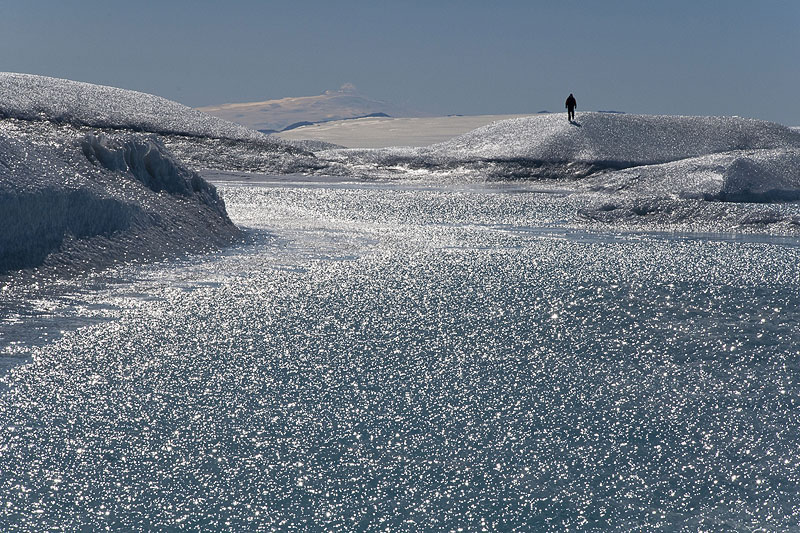 A solitary figure descends an ice ridge onto the wind-polished water-ice close to the ice margin at Minna Bluff. |
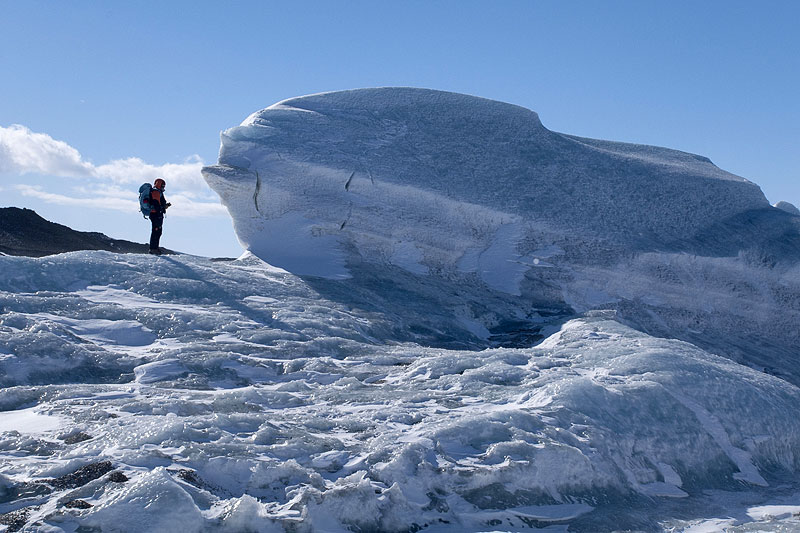 An undercut channel water displaying inclined accretion layering within marine ice in the vicinity of the medial moraine extending from Minna Bluff. | 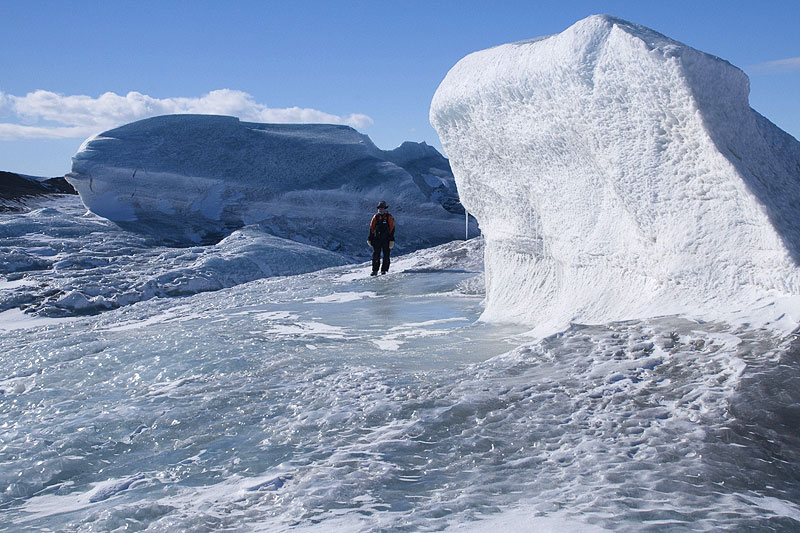 Erosion by stream channels has left this striking leaning ice tower. | 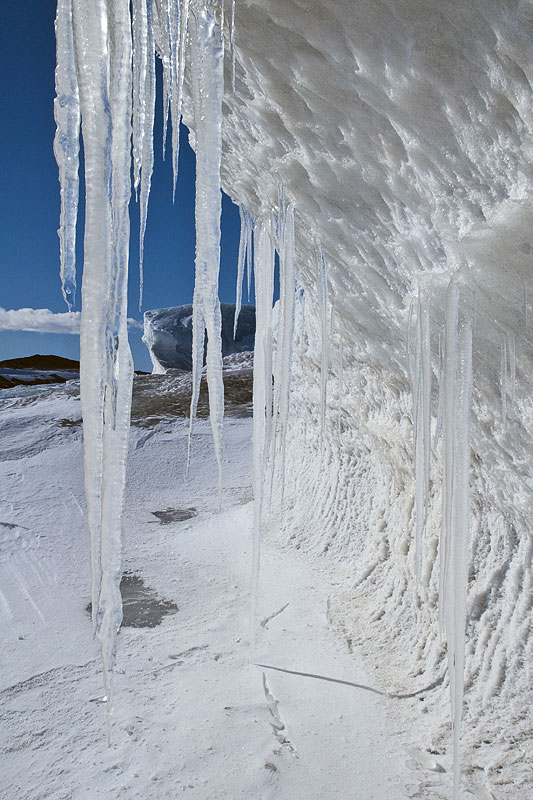 The overhanging wall of a meltwater channel reveals these delicate icicles. |  Looking up at the sky from underneath the roof of the overhang shows a sparkling set of icicles. |
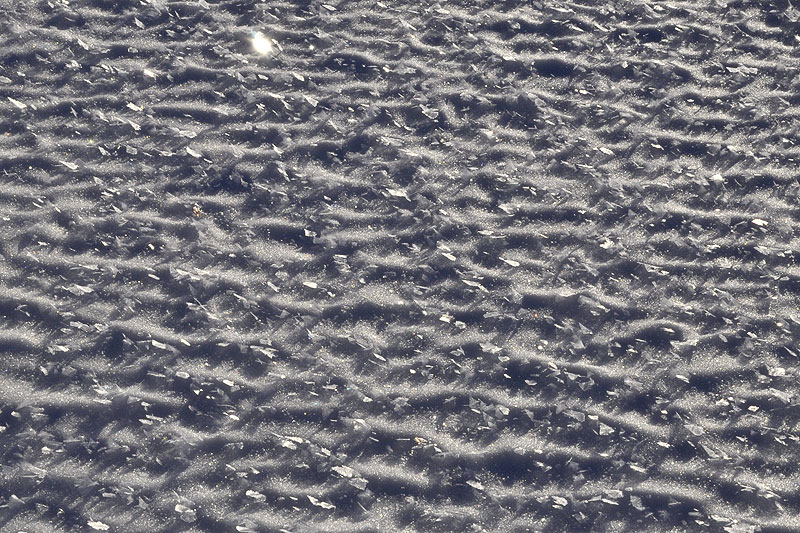 A wind-rippled snow surface in the middle of the ice shelf is draped with beautiful sparkling "ice flowers", some of which are reflecting the sun. | 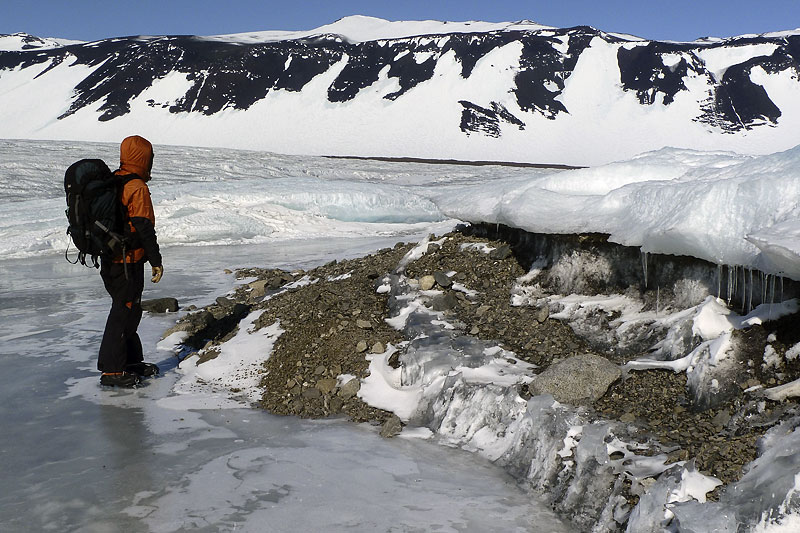 A near-horizontal layer of debris emerging from the marine ice zone of the ice shelf near Minna Bluff. This debris represents a sample of the sea floor that originally froze to the bottom of the ice shelf. | 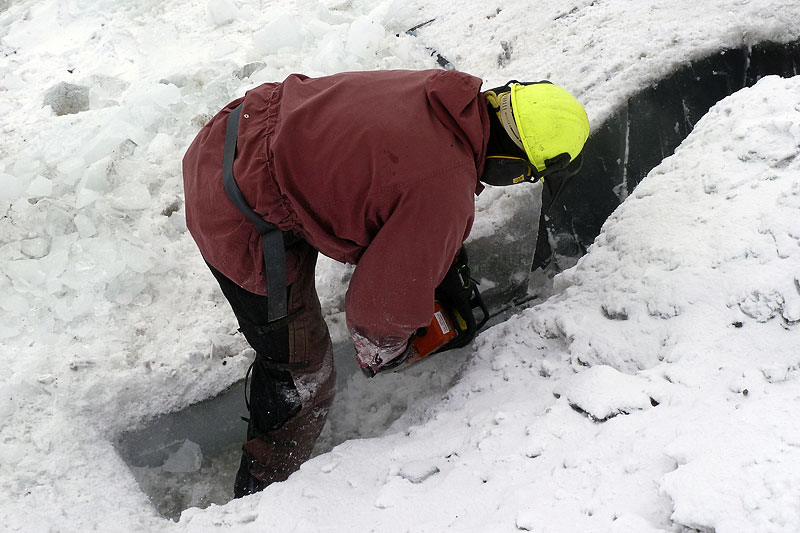 Sean Fitzsimons using a chain saw to collect ice blocks for isotopic analysis. The results will convey information about the origin of the ice. | 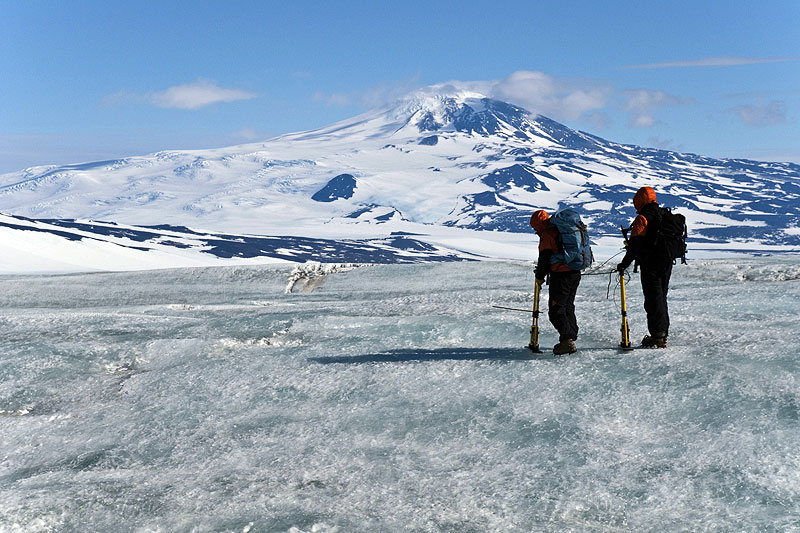 High-resolution ground-penetrating radar surveying on foot with Mt Discovery in the background. The results show the internal layering of the ice shelf. |
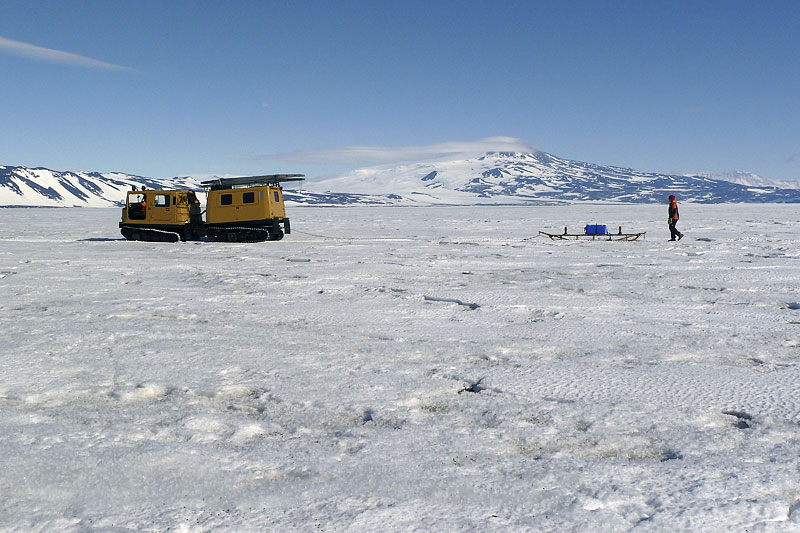 Radar surveying by dragging the instruments at low speed using the Hägglunds. | 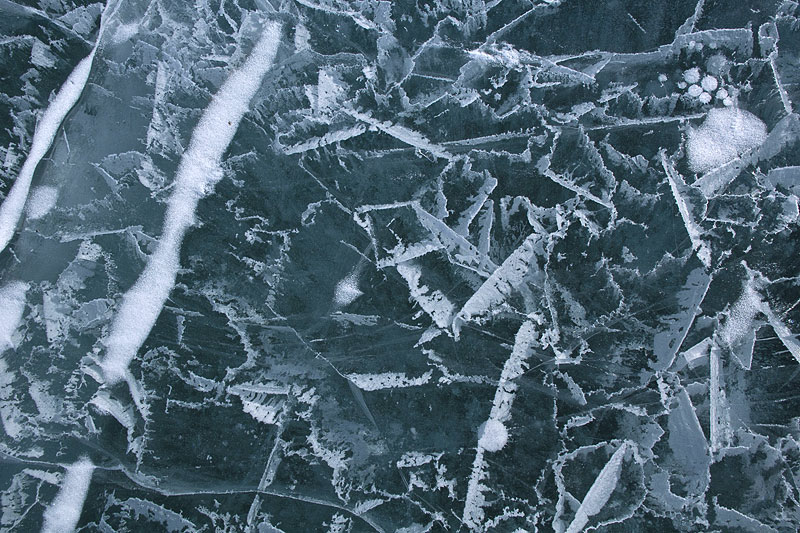 Fractures in marine ice at the ice shelf surface, picked out by fresh wind-blown snow. | | |
| Photos Michael Hambrey, November and December 2010. |